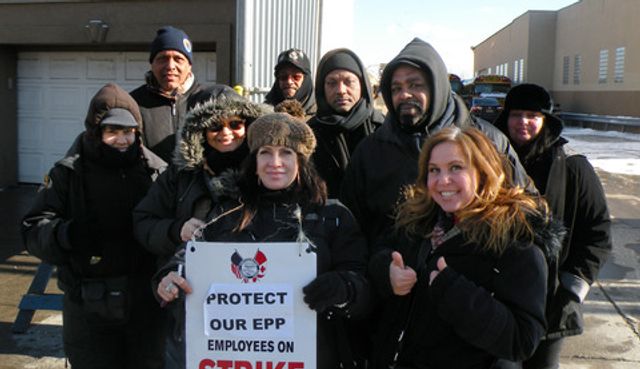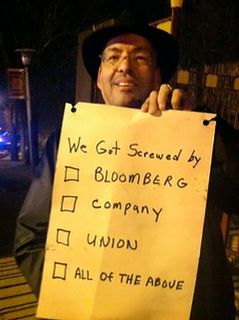Peter Symonds
The latest round of talks in Montreux, Switzerland between the US and Iran over the latter’s nuclear programs ended yesterday with signs that the framework of an agreement could emerge before the deadline of March 31.
US Secretary of State John Kerry, in remarks clearly aimed at Israeli Prime Minister Benjamin Netanyahu, declared that he would not allow politics or “external factors” to distract him from the ongoing negotiations. “No one has presented a more viable lasting alternative for how you actually prevent Iran from getting a nuclear weapon,” he said. “So folks, simply demanding that Iran capitulate is not a plan.”
On Tuesday, Netanyahu delivered an anti-Iran tirade to an extraordinary joint session of the US Congress, denouncing what he called a “bad deal” that would lead to a “nuclear nightmare.” While he did not spell it out in his speech, the Israeli prime minister has repeatedly indicated what he regards as the alternative—military attacks on Iran’s nuclear facilities if it refuses to agree to completely dismantle all its nuclear plants and programs.
In a Reuters interview on Monday, President Barack Obama outlined US demands that Iran agree to “double digit years of keeping their program where it is right now and, in fact, rolling back elements of it that currently exist.” Washington is also insisting on a highly intrusive UN inspection regime to ensure “we’ve got a way of verifying” any agreement.
According to the Wall Street Journal, US negotiators are pressing Tehran to substantially wind back its uranium enrichment plants and other facilities to ensure that it would take at least a year to produce enough nuclear fuel to construct a weapon. “While there is no explicit agreement on the 12-month break-out period, officials say there is a growing understanding on all sides that it must be part of a deal,” the newspaper reported.
Kerry is exploiting the harsh US-led economic sanctions that have crippled the Iranian economy, as well as the implicit threat of military attack, to extort major concessions from Iranian negotiators. The unsubstantiated allegation that Iran is building nuclear weapons—repeatedly denied by Tehran—is particularly hypocritical, given Washington’s acceptance of Israel’s nuclear arsenal and its refusal to sign the Nuclear Non-proliferation Treaty.
For Iran, the crucial issue is to ensure the lifting of all sanctions—something that Washington is yet to accept. While Foreign Minister Javad Zarif was upbeat on the prospects for a deal, he bluntly declared on Monday that the US and its allies “must once and for all, come to the political understanding that sanctions and agreement don’t go together. If they want an agreement, sanctions must go.”
Any nuclear agreement with Iran would mark a significant shift in US foreign policy. As far as Washington is concerned, such a deal has never been primarily about Iran’s nuclear programs. It has always been bound up with broader geo-political considerations—in the first instance ensuring American domination in the energy-rich regions of the Middle East and Central Asia.
For more than a decade under the Bush and Obama administrations, the US has imposed economic sanctions and repeatedly threatened to wage war against Iran on the pretext of destroying its nuclear capabilities. Obama continues to insist that all options, including the military one, remain “on the table.”
Washington’s overriding aim has been to fashion a regime aligned with US economic and strategic interests. With the election of Iranian President Hassan Rouhani in 2013, the Iranian regime signalled its willingness to make significant concessions to reach an accommodation with the US. Now Washington is seeking to pursue the same broad objectives through negotiations on the nuclear issue.
This orientation has provoked sharp divisions in Washington, particularly among Republicans and Democrats very closely aligned to Israel and other US allies, such as Saudi Arabia and the Gulf States, that are deeply hostile any rapprochement with Iran. Having organised this week’s speech by Netanyahu, Republican leaders are seeking to block an agreement by enacting legislation to ensure that any deal must have Congressional approval.
While well aware that a deal could damage relations with Israel and Saudi Arabia, the Obama administration is no doubt looking for Iranian concessions on a range of strategic issues in the Middle East and beyond. In its new war in the Middle East, the US has already coordinated its military operations to some degree with Iran, which is supplying advisers and equipment to prop up the Shiite-dominated regime in Baghdad.
At the same time, Washington is seeking to pacify existing allies. Kerry has flown to the Saudi Arabia to meet today with King Salman and Gulf State foreign ministers. Saudi Arabia, which has long regarded Iran as its chief regional rival, is deeply concerned that it will be marginalised if Washington ends sanctions and establishes closer relations with Iran.
However, the Obama administration’s pursuit of a deal with Iran is driven by considerations that go beyond the Middle East. Amid a deepening global economic breakdown and rising geo-political tensions, the US is engaged in an aggressive and reckless confrontation with Russia over Ukraine, while “rebalancing” its military forces to the Indo-Pacific region against China. As it prepares for possible war against two nuclear-armed powers, the US is seeking to enlist, or at least neutralise, Iran which occupies the strategic crossroads between the Middle East and Central Asia.
In a recent comment entitled, “The intersection of three crises,” Reva Bhalla, a Stratfor think tank analyst, commented that the worsening European economic crisis, tensions with Russia over Ukraine and talks with Iran were “inextricably linked.” Having foreshadowed a breakdown of the Minsk agreement over Ukraine, she argued that the US must prepare accordingly for conflict with Russia.
“But focusing on the Eurasia theatre entails first tying up loose ends in the Middle East, starting with Iran,” Bhalla wrote. “If the United States is to realistically game out scenarios in which US military forces confront Russia in Europe, it needs to be able to rapidly redeploy forces that have spent the past dozen years putting out fires ignited by sprouting jihadist emirates and preparing for a potential conflict in the Persian Gulf [with Iran].”
After noting that a US-Iranian understanding would go well beyond the nuclear issue, Bhalla suggests: “It will draw regional contours of an Iranian sphere of influence and allow room for Washington and Tehran to cooperate in areas where their interests align.” She concludes: “The United States, regardless of which party is controlling the White House, will rank the threat of a growing Eurasian conflict well ahead of de-escalating the conflict with Iran.”
The Obama administration’s ability to conclude a deal with Iran, in the face of open opposition from Israel and sections of Congress, remains to be seen. The next round of talks begins next week on March 15. Obama will review any framework agreement before proceeding to consider a full detailed agreement, scheduled to be concluded by June 30.

